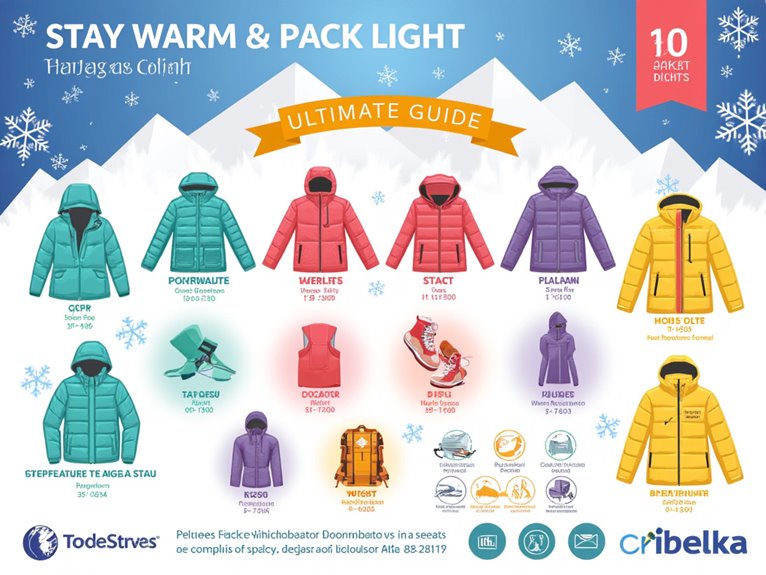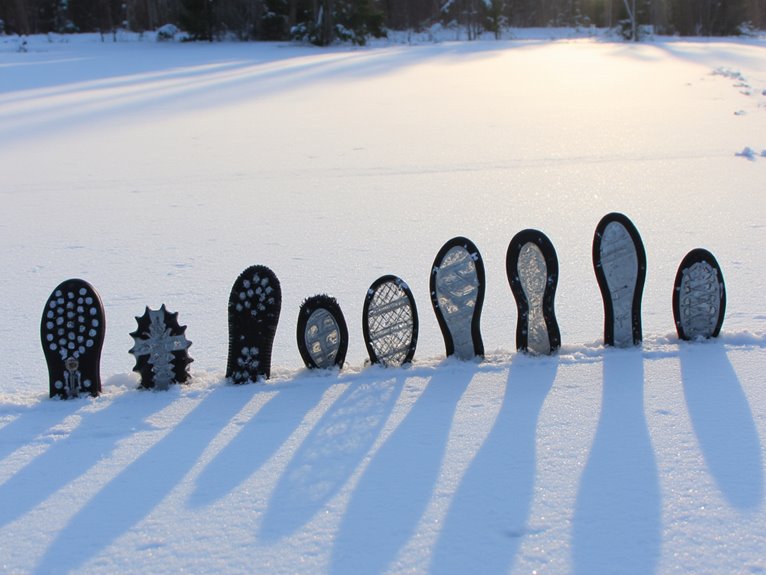Do I Need a Sleeping Bag for Southeast Asia?
Southeast Asia's tropical climate typically means warm temperatures, but there are instances where a sleeping bag is necessary. In mountainous regions like northern Thailand, Laos, and Vietnam, temperatures can drop to around 10°C (50°F) or lower, making a sleeping bag essential. Even in rural areas, chilly evenings can occur, and homestays may not always provide adequate bedding. A lightweight sleeping bag with a temperature rating of around 15°C to 20°C (59°F to 68°F) is suitable for Southeast Asia's climate. To guarantee a comfortable and restful trip, consider the specific region, time of year, and type of accommodations to determine if a sleeping bag is necessary, and discover more about packing the right gear for your trip to secure a peaceful journey.
We are supported by our audience. When you purchase through links on our site, we may earn an affiliate commission, at no extra cost for you. Learn more. Last update on 25th December 2025 / Images from Amazon Product Advertising API.
Southeast Asia's Tropical Climate
Southeast Asia's tropical climate, characterized by high temperatures and humidity levels throughout the year, necessitates careful consideration when selecting a sleeping bag for travel in the region.
The hot and humid environment means that a lightweight, breathable sleeping bag is essential to facilitate a comfortable night's sleep.
Look for sleeping bags with a lower fill power rating, as they provide adequate warmth without excessive bulk. Additionally, consider sleeping bags with moisture-wicking properties to help regulate body temperature and prevent overheating.
A sleeping bag with a temperature rating of around 15°C to 20°C (59°F to 68°F) would be suitable for Southeast Asia's climate, guaranteeing a restful night's sleep.
When to Bring a Sleeping Bag
When deciding whether to bring a sleeping bag to Southeast Asia, it's essential to weigh the specific circumstances of your trip.
While the region's tropical climate may suggest warm temperatures, there are situations where a sleeping bag is necessary, particularly in mountainous areas where nighttime temperatures can drop drastically.
In these cases, a sleeping bag can be a valuable addition to your packing list, ensuring a comfortable and restful night's sleep.
Cold Mountain Nights
As you ascend to higher elevations in Southeast Asia, the temperature can drop substantially, making a sleeping bag an essential item to pack for a comfortable night's sleep.
The mountainous regions of Southeast Asia, such as northern Thailand, Laos, and Vietnam, can experience chilly temperatures, especially during the winter months.
In areas like Sapa, Vietnam, or Chiang Mai, Thailand, temperatures can drop to around 10°C (50°F) or even lower.
A good sleeping bag can make all the difference in ensuring a warm and restful night's sleep.
If you plan to trek or visit these regions, a sleeping bag is a must-pack item to stay comfortable and warm.
Homestay and Hostels
While trekking in Southeast Asia's mountainous regions, a sleeping bag may not always be necessary, especially when staying in homestays or hostels that provide bedding.
In these cases, you can rely on the provided blankets and sheets to keep you warm.
However, it's still important to bear in mind the specific conditions of your accommodations and the time of year you're traveling.
Homestays often provide bedding, but it's always a good idea to ask your host about the sleeping arrangements beforehand.
Hostels usually have blankets and sheets, but the quality can vary greatly.
Research your accommodations before arriving to take into account if a sleeping bag is necessary.
Higher Elevations and Cooler Nights
Climbing to higher elevations in Southeast Asia, travelers often encounter cooler nighttime temperatures that can drop substantially, even in tropical regions.
At elevations above 1,000 meters, the temperature can drop to around 15°C (59°F) or lower.
In areas like Chiang Mai, Thailand, or Dalat, Vietnam, nighttime temperatures can be quite chilly, especially during the winter months.
In these cases, a lightweight sleeping bag or travel blanket can be a valuable addition to your packing list.
However, it's essential to bear in mind the specific region and time of year you plan to visit to determine if a sleeping bag is truly necessary.
Rural Areas With Chilly Evenings
In rural areas of Southeast Asia, the evening temperatures can drop sharply, even in tropical regions, making a lightweight sleeping bag or travel blanket a valuable asset for travelers. The cooler evenings can be a welcome respite from the heat, but they can also catch you off guard if you're not prepared.
Homestays and village accommodations may not always provide adequate bedding, leaving you to fend for yourself.
Rural areas often have limited access to amenities, making it difficult to purchase warm clothing or blankets.
A lightweight sleeping bag or travel blanket can be a lifesaver on chilly rural evenings, ensuring a comfortable and restful night's sleep.
Urban Centers and Hostel Stays
Urban hostels and guesthouses often provide adequate bedding, but a lightweight sleeping bag or travel blanket can still be useful for maintaining personal hygiene and comfort in shared dormitories.
This is especially true in Southeast Asia, where communal spaces can be crowded and cleanliness may vary.
A sleeping bag or blanket can provide a layer of protection between you and the hostel's bedding, giving you peace of mind and a better night's sleep.
Additionally, a lightweight sleeping bag can be a convenient and space-saving alternative to carrying a bulky blanket.
In urban centers, the temperature is often warm, so a lightweight, breathable sleeping bag or travel blanket is sufficient for a comfortable stay.
Trekking and Camping in Mountains
When venturing into the mountains of Southeast Asia, it's vital to be prepared for the unpredictable and often harsh conditions.
As temperatures drop dramatically at higher elevations, a reliable sleeping bag is essential to guarantee a safe and comfortable night's rest.
In this section, we'll delve into the key considerations for trekking and camping in the region's majestic mountain ranges, including the importance of packing the right camping gear and preparing for high-altitude excursions.
Mountain Temperatures Drop
Mountain temperatures can plummet rapidly, especially at elevations above 1,500 meters, making it essential to pack a sleeping bag that can withstand freezing conditions.
This is particularly vital in Southeast Asia, where mountainous regions like Chiang Mai, Thailand, and Sapa, Vietnam, can drop to near-freezing temperatures at night.
Temperatures can drop by as much as 10°C at night, even in tropical regions.
Wind chill can make the air feel even colder, making a warm sleeping bag imperative.
Hypothermia can set in quickly, especially in wet conditions, so it's essential to prioritize a warm and dry sleeping bag.
Camping Gear Essentials
Essential camping gear for trekking and camping in Southeast Asia's mountains includes a reliable sleeping bag, a sturdy tent, and a portable stove to guarantee a safe and comfortable outdoor experience, and to safeguard a pleasant adventure.
A waterproof and windproof tent will protect you from the elements, while a portable stove will allow you to cook hot meals in the wilderness.
A sleeping bag with a suitable temperature rating will guarantee a good night's sleep.
Additionally, don't forget to pack a camping mat, a headlamp or flashlight, and a first-aid kit.
These essentials will provide that you're well-prepared for your trekking and camping trip in Southeast Asia's mountains.
High-Altitude Trek Preparation
Frequently, high-altitude treks in Southeast Asia's mountains require meticulous preparation to guarantee a safe and successful adventure. The high-altitude environment demands respect, and neglecting to prepare can lead to serious consequences.
To ensure a successful high-altitude trek, consider the following essential items:
- Acclimatization: Allow your body to adapt to high altitudes by ascending gradually and incorporating rest days.
- Weather Forecasting: Stay informed about changing weather conditions to avoid getting caught in harsh weather.
- Emergency Contingency Planning: Develop a plan for emergency situations, including contingency funds and evacuation procedures.
Monsoon Season and Rainy Nights
During Southeast Asia's monsoon season, which typically spans from May to October, travelers can expect to encounter heavy rainfall and cooler temperatures, making a good sleeping bag an indispensable companion for a comfortable night's sleep.
As the rain pours down, a reliable sleeping bag will keep you warm and dry, ensuring a restful night despite the wet conditions.
Look for a water-resistant sleeping bag with a waterproof rating to keep you dry and comfortable.
Additionally, consider a sleeping bag with a temperature rating suitable for the cooler temperatures that come with the monsoon season.
With a good sleeping bag, you can brave the rainy nights and wake up refreshed, ready to take on another day of adventure in Southeast Asia.
Islands and Beach Camping
When venturing into the idyllic islands and beaches of Southeast Asia, it's vital to prioritize a sleeping bag that can withstand the humid tropical climate.
As you set up camp on the beach, a reliable sleeping bag will guarantee a comfortable night's sleep amidst the soothing sounds of the waves.
Look for features that provide superior breathability, moisture-wicking properties, and a comfortable temperature rating to secure a restful night's sleep under the stars.
Beach Camping Essentials
Three essential items to pack for a beach camping trip in Southeast Asia are a waterproof bag, a portable stove, and a lightweight sleeping bag. These must-haves will guarantee a comfortable and enjoyable trip.
A waterproof bag protects your gear from the elements and unexpected rain showers.
A portable stove allows you to cook delicious meals and boil water for a revitalizing beachside brew.
A lightweight sleeping bag keeps you warm and cozy on chilly nights, even in tropical climates.
Remember to pack these essentials to guarantee a stress-free and enjoyable beach camping experience in Southeast Asia.
Tropical Island Nights
Tropical island nights in Southeast Asia are characterized by balmy temperatures and stunning starry skies, making a comfortable sleeping bag an essential component of a restful beach camping experience.
With temperatures ranging from 70°F to 80°F (21°C to 27°C), a lightweight sleeping bag with a comfort rating of around 15°C to 20°C is ideal.
Look for one with a breathable, moisture-wicking fabric to keep you cool and dry in the humid tropical climate.
A compact and portable design is also essential for easy transportation and storage.
When choosing a sleeping bag for island camping, prioritize comfort, breathability, and packability to guarantee a peaceful night's sleep under the stars.
Homestays and Village Visits
Immersed among lush rice paddies and surrounded by the gentle hum of rural life, homestays and village visits offer an immersive experience that allows travelers to plunge deeper into Southeast Asia's rich cultural heritage.
These authentic encounters provide a unique opportunity to engage with local communities, share meals, and participate in traditional activities.
Expect basic amenities, as homestays often lack modern comforts.
Be respectful of local customs and traditions, especially when visiting rural villages.
Bring a sleeping bag or linen, as bedding may not always be provided.
Packing Strategies for Southeast Asia
As you prepare for your Southeast Asian adventure, it's essential to pack smart, as the region's varying climates, cultural nuances, and rugged terrain demand careful consideration of what to bring and what to leave behind.
A good packing strategy involves layering, versatility, and a focus on essentials.
Pack lightweight, quick-drying clothing suitable for hot and humid climates, as well as layers for cooler evenings in the north.
Include a waterproof jacket and comfortable trekking shoes.
Don't forget insect repellent, sunscreen, and a portable power bank for your devices.
Roll your clothes to save space, and consider packing a portable laundry line for quick washes.




